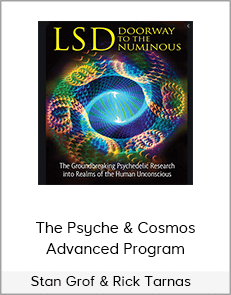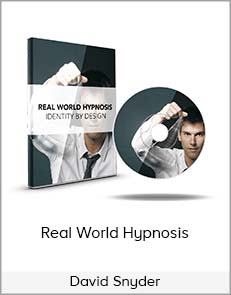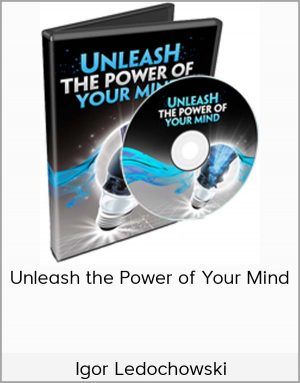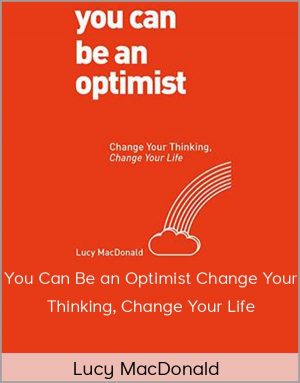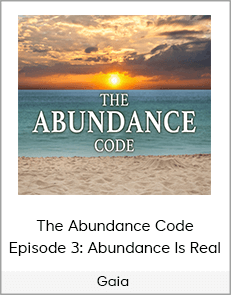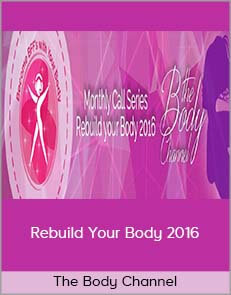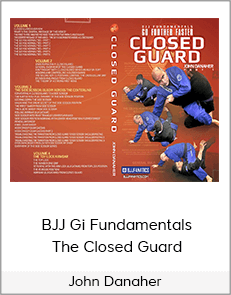Stan Grof & Rick Tarnas – The Psyche & Cosmos Advanced Program
$195.00$1,067.00 (-82%)
n this 18-module transformational journey, Stan and Rick will guide you to successfully experience a deepening of beauty, meaning,
Stan Grof & Rick Tarnas – The Psyche & Cosmos Advanced Program
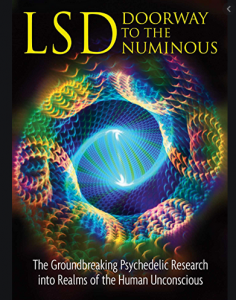
Check it out: Stan Grof & Rick Tarnas – The Psyche & Cosmos Advanced Program
What You’ll Discover in These 18 Modules
In this 18-module transformational journey, Stan and Rick will guide you to successfully experience a deepening of beauty, meaning, and purpose in your life through tapping into the wisdom of archetypal astrology.
Each teaching and training session will build harmoniously upon the previous ones so you’ll develop a complete holistic understanding of the practices, tools, and principles you’ll need to turn this knowledge into real transformation.
Four Q&A Sessions
In addition to 14 content teachings sessions, you’ll receive four Q&A sessions with one or both faculty. These dynamic sessions, in which Stan and Rick will support you in working more deeply with the material from each of the teaching modules, will be a great opportunity to unpack the rich teachings you’ll be receiving.
Note: If you are new to Stan and Rick’s archetypal astrology teachings, we ask that you complete their foundational 8-module program, Psyche & Cosmos, on your own as a prerequisite, which you can do before, or in parallel with, the advanced program. This extra training is described below and is included in your registration.
Module 1: Practical Strategies for Self-exploration & Healing
In our opening module, we’ll introduce the larger terrain we’ll cover in this advanced course, and then move directly into a detailed summary of basic strategies for self-exploration in holotropic therapy, psychedelic therapy, and similar modes of transformation. Of particular importance will be the role of the inner healer that emerges in such work, and the use of archetypal astrology for the timing and understanding of experiential sessions. We’ll summarize basic principles and practical guidelines for undergoing such journeys of transformation, as well as the consistent correlations we’ve observed between specific astrological factors and different experiential outcomes.
In this module, you’ll:
Gain an understanding of the new paradigm of healing and therapy that has emerged from psychedelic and holotropic research, and the new approach to effective healing mechanisms and processes
Examine the best transits for supporting transformation and healing with respect to the timing of experiential sessions and psychedelic therapy, and the transits to be cautious with in certain circumstances
Expand your perspective on the different ways that personal transformation can unfold, with specific, practical tips on how to pursue self-exploration in a skillful way that supports positive outcomes
Understand how knowing your transits and natal chart can contribute to your healing journey
Module 2: Spiritual Emergence & Emergencies
Understanding & Treatment of Transpersonal Crises
Research of non-ordinary states of consciousness has shown the need to vastly expand and deepen the model of the human psyche used by mainstream psychiatry by adding the perinatal and transpersonal domains. Doing so will help professionals recognize that a large group of spontaneous episodes of these states, which are currently seen as manifestations of serious mental diseases, are actually crises of spiritual opening. Correctly understood and properly supported, such episodes have a great therapeutic, transformative, and evolutionary potential, leading Stan and Christina Grof to coin the term “spiritual emergencies.”
In turn, archetypal astrology turned out to be an invaluable tool that can help us to understand both the timing and the archetypal content of these episodes. The combination of the newly expanded psychology with archetypal astrology will be illustrated by the case of Karen, a 28-year-old woman who experienced a powerful 3-week spiritual emergency and transformation.
In this module, you’ll:
Find out about an important group of spontaneous episodes of non-ordinary states of consciousness currently diagnosed and treated as psychoses that are actually radical attempts by the psyche to heal itself
Discover how to tap the healing, transformative, and evolutionary potential of such states
Gain an understanding of the specific ways in which archetypal astrology can provide crucial insight into the understanding of episodes of spiritual emergency and transformation
Module 3: Q&A With Stan and Rick
This entire module will be devoted to responding to participants’ questions, concerning the content of the two preceding modules.
Module 4: Understanding the Arts
Perinatal, Transpersonal & Astrological
Sigmund Freud’s pioneering efforts were initially focused on finding the causes of psychoneuroses and the most effective approaches to treating them. As he continued his exploration of the unconscious using the open-ended method of free association, his interests significantly broadened and he explored how the psychoanalytic method can illuminate cultural and sociopolitical issues, wars and revolutions, religion, and art.
We’ll review briefly the efforts of Freud and some of his followers to understand works of art, as exemplified in his own analysis of Leonardo da Vinci, Dostoevsky, Goethe, and Shakespeare, in Maria Bonaparte’s study of Edgar Allan Poe, and the contributions of Otto Rank and C. G. Jung.
Whereas the Freudian analyses were largely unsuccessful as long as they were limited to postnatal biography, a more encompassing model of the psyche that includes the perinatal and transpersonal domains has opened the way to a much deeper, less reductionist understanding of art. In turn, archetypal astrological analysis opens up a new source of insight into works of art and into the life and work of major artists, providing extraordinarily precise indications of the specific archetypal qualities and the timing of their creative expression.
For this module, please watch the film Groundhog Day, which will be used as an example of the kinds of insights afforded by this expanded understanding of the psyche.
In this module, you’ll:
Explore the pioneering efforts of Freud and his followers to apply the insights from their clinical work to the understanding of the arts
Discover how this understanding of art deepens when we use a more comprehensive model of the human psyche that includes the perinatal and transpersonal domains
Explore how combining this approach with insights provided from archetypal astrology opens up a further dimension of understanding and appreciation of works of art
Analyze the powerful spiritual and psychological transformation depicted in the film Groundhog Day
Module 5: Understanding of History
Depth Psychological & Archetypal Astrological Factors in Politics, Religion, Revolutions, and Cultural Trends
The analysis of history, its patterns, and its driving forces has long compelled the attention of scholars and thoughtful citizens. What can explain the sudden eruption of mass revolutionary impulses, violence, and totalitarianism, or, on the other hand, periods of widespread spiritual awakening and cultural creativity — sometimes synchronistically happening in multiple societies around the world?
Consciousness research based on work with holotropic states has provided a new dimension of understanding in the analysis of history. Violence and greed have been among the most powerful and dangerous forces driving human history, yet neither biological nor mainstream psychological theories have been able to explain what Erich Fromm called “malignant aggression” — the disposition of the human species to forms of violence that far exceed in nature and scope what is found in the rest of the animal kingdom. Holotropic states point to deeper sources of this aggression on the perinatal level (trauma of biological birth) and in the archetypal forces of the collective unconscious.
We’ll look at the evidence from clinical work and from Lloyd deMause’s psychohistorical studies, using comparison of posters, caricatures, and demagogic propaganda from the time of wars and revolutions with paintings and drawings from sessions in which people are reliving their birth. These insights will be deepened by introducing the astonishing correlations between historical events and planetary cycles as set out in Richard Tarnas’ book, Cosmos and Psyche, and the role of archetypal forces in shaping human perception and behavior on the collective level.
In this module, you’ll:
Examine the field of psychohistory and how its findings concerning sociopolitical events are corroborated by observations from clinical work with psychedelics
Discover how destructive forms of human aggression can be reduced and transformed by responsible work using holotropic states of consciousness
Explore the remarkable correlations of historical events and cultural epochs with planetary cycles, and how knowledge of these patterns can provide a crucial source of collective self-awareness in understanding the past and shaping the future
Module 6: Personal Transits
Calculation & Interpretation
This module will provide practical instruction on how to calculate and interpret your own personal transits. Be sure to have your birth chart and a blank sheet of paper to work with as you watch. We’ll explain the basics of transit analysis, so you can do it for yourself in the future — and begin to explore the extraordinary perspective afforded by knowing which archetypal energies are being activated at which time, much like a cosmic weather report.
You can also examine major past periods and events in your life by observing what the transits were at that time, and gain a new level of self-understanding in the unfolding drama of your life. You thereby begin to make what is unconscious conscious, becoming freer to participate intelligently in the unfolding of these forces and patterns.
If you do not already possess a copy of your birth chart, you can acquire one for free through the astro.com website by providing your birth date, time, and place. (If you are uncertain of the exact time and know only the day, put in noon for the time; if you have an approximate range of time when you were born, like the evening or the afternoon, put in the time that is closest to the middle of that time period, and make a note to yourself of the potential margin of error (e.g., 4:00pm, plus or minus two hours). We’ll address these specific situations during the module.
In this module, you’ll:
Gain a hands-on understanding of how to do your own transit calculations
Gain access to new resources for understanding your transits and the unfolding archetypal dynamics of your life
Discover how to assess the relative importance of various planetary transits, and learn practices that can foster greater self-awareness and skillful living through knowledge of your birth chart and transits
Module 7: The Synergy of Depth Psychology & Archetypal Astrology
Astrology and psychology are mutually illuminating, each discipline offering a tremendous enrichment of the other. While astrology can enhance psychology and therapy with important information about the specific archetypal complexes informing the individual’s particular psychology and the timing of their activation, psychology can in turn provide astrology with crucial conceptual tools such as the understanding of the unconscious or the nature of projection. Equally valuable is psychology’s capacity to aid the responsible practice of astrological counseling, in which the counselor needs to be aware of issues such as transference and counter-transference. We’ll discuss these and many other ways in which archetypal astrology and depth psychology can enhance and deepen each other.
In this module, you’ll:
Discover how astrology can help psychology and psychotherapy by providing insight into the individual personality, and into the timing of archetypal activations at both the individual and collective level
Examine how astrology can compensate modern psychology’s blindness to timing and unfolding cycles in life
Understand how depth psychology can help resolve many problems with how conventional astrology is typically practiced today
Explore the ways in which consciousness research with holotropic states offers surprising support for many of the basic principles underlying astrology and an ensouled world view
Module 8: Q&A With Stan and Rick
This module will be devoted to responding to participants’ questions, concerning the content of the four preceding modules.
Module 9: Archetypes, Mythic Imagination & Modern Society
According to the understanding that has emerged from Jungian psychology, consciousness research, and scholarly mythological research, archetypes are timeless primordial cosmic principles underlying, informing, and forming the fabric of the material world. In this module, we’ll explore the importance of archetypes in a variety of fields.
In psychiatry, psychology, and psychotherapy, adding the archetypal domain to the cartography of the psyche provides a deeper understanding of emotional disorders and opens new perspectives for therapy. As Philipp Frank has shown in his book Philosophy of Science, the source of the basic axiom of a scientific theory or the source of a scientific discovery is often an archetypal motif. Archetypal analysis is similarly valuable for understanding political movements and cultural developments.
In this module, you’ll:
Examine archetypes and the three forms in which they can manifest: mythic, cosmological, and psychological
Find out how Joseph Campbell’s influential work with mythology and archetypes proved helpful in understanding experiences undergone by patients in psychedelic and holotropic therapy
Discover the important role that archetypes play in a variety of fields, from the understanding of emotional states to scientific theory and political analysis
Module 10: Synchronicity
Psychology, Archetypal Astrology & Cosmology
A prominent scholar of religious studies recently said, “I don’t believe in anything any more, but I believe in synchronicity.” And Bob Dylan once sang, “The highway’s made for gamblers, better use your sense. Take what you have gathered from coincidence.”
C. G. Jung coined the term synchronicity as a name for coincidences in which two or more independent events having no apparent causal connection nevertheless form a meaningful pattern. On occasion, such patterning can strike one as so extraordinary that it is difficult to believe the coincidence has been produced by chance alone. The events give the distinct impression of having been precisely arranged, invisibly orchestrated.
In our postmodern age when all the old metanarratives are contested, awareness of synchronicities has become for many alert individuals a crucial source of spiritual orientation and nourishment. Yet synchronicities are both gifts and challenges. They can be felt as acts of grace or the subtle patternings of a cosmic artist, yet they can also suggest an elusive trickster who demands careful discernment both outer and inner.
There seem to be stages that individuals go through in their deepening recognition of the synchronistic dimension of life. Synchronicities can compensate for the one-sidedness of egoic consciousness, and move the individual psyche toward wholeness. They also have, like all things, a shadow side. Most profoundly, they can give us intimations of the numinous. Their occurrence can have a healing effect psychologically, as well as a paradigm-shifting power intellectually. And in the case of astrological correlations, they can provide a cosmic context and foundation for understanding the nature of the universe we live in and the place of human beings within it.
In this module, you’ll:
Investigate the concept and phenomenon of synchronicity, from Jung’s original formulation to more recent understandings
Examine the significance of synchronicity in our own lives and psychological journeys, including both the shadow aspects of synchronicity and its spiritually transformative potential
Explore the philosophical implications of synchronicity and how these in turn affect our understanding of psychology and psychotherapy
Discover the special relevance of synchronicity to how we understand astrology, and in turn, what astrological correlations signify for our understanding of synchronicity
Explore how synchronicity serves as an entryway to understanding cosmological issues
Module 11: Schools of Depth Psychology & Their Founders
At the turn of the twentieth century in Vienna, Sigmund Freud made revolutionary discoveries concerning the human psyche and single-handedly laid the foundations of a new discipline — depth psychology. He surrounded himself with a group of brilliant followers, some of whom departed from his original ideas and seriously challenged some basic assumptions of his teachings. A few of these — Otto Rank, Alfred Adler, C. G. Jung, Melanie Klein, Wilhelm Reich, and others — created their own schools.
Today’s field of depth psychology contains a perplexing plethora of schools that seriously differ on fundamental issues — what are the most important motivating forces of the psyche, why do symptoms appear and what do they mean, and what techniques should be used when working with clients.
An approach combining research of holotropic states of consciousness with archetypal astrology provides unexpected insights into this situation. In this module, we’ll discuss how the evidence from psychedelic therapy and holotropic states shines a new light on the basic principles underlying each of the various schools, affirming some and recontextualizing others within a larger frame of reference. We’ll also discuss how the general design of these schools, their focus on a certain level of the unconscious, and sometimes specific details of their theories closely reflect the planetary aspects in their founders’ astrological charts as well as transits they had at the time they formulated their theories. We’ll also discuss how the widespread occurrence of specific psychiatric symptoms and syndromes reflects the collective transits of the era, as well as the personal transits of the patients, which shines a light on the reason the Diagnostic and Statistical Manual of Mental Disorders (DSM) keeps having to be radically revised.
In this module, you’ll:
Delve into the history of depth psychology and the many schools of psychotherapy it’s spawned, each of which offers different opinions concerning the human psyche in health and disease
Discover how the combination of holotropic research and archetypal astrology helps clarify these differences within a larger, coherent framework
Examine what the evidence of psychedelic therapy and holotropic research suggests about which fundamental tenets of the different schools are supported empirically, and which need to be revised, offering greater clarity in approaching the deep mystery of the human psyche
Explore the striking insights opened up by archetypal astrological analysis of the different pioneer psychologists’ birth charts and transits, reflecting the specific breakthroughs, emphases, and biases that each founder’s psychology embodied
Appreciate that the psyche is a deep mystery, indeterminate and fluid, and one that can never be captured by any one theory
Explore how our theories about the psyche reflect evolving cultural and archetypal factors that shape our vision and affect the kinds of symptoms and conditions that emerge in a given era
Module 12: Case Histories With Psychedelic & Holotropic Experiences
One of the best ways to begin to integrate the power of transpersonal psychology and archetypal astrology for understanding the depths of human experience is to examine case histories in which dramatic non-ordinary states of consciousness and psychological conditions are described and then analyzed with the aid of these perspectives. In this module, we’ll set forth several cases that represent different categories of holotropic states — an unexpectedly intense turn of events while using a psychedelic substance in an ancient Mexican religious site; a psychiatric patient with a particularly traumatic biography who underwent LSD therapy; a participant in a holotropic breathwork seminar who had an extremely dramatic and healing breathwork experience involving past lives. In each case, we’ll show how applying a transpersonal model of the psyche combined with archetypal astrological analysis provides uniquely clarifying insights.
In this module, you’ll:
Deepen your grasp of how extreme mental conditions and transformational experiences involving non-ordinary states of consciousness can be illuminated by transpersonal psychology and archetypal astrology
Explore the expanded paradigm of reality and of the human psyche suggested by consciousness research with holotropic states
Strengthen your familiarity with the method of archetypal astrological analysis of natal charts and transits to use it in your own life and self-understanding
Module 13: Q&A Session With Stan and Rick
This module will be devoted to responding to participants’ questions, concerning the content of the four preceding modules.
Module 14: Practical Advantages of the Emerging Synthesis
Compared with the conventional psychiatric response to mental suffering and symptoms, the emerging approach suggested by transpersonal psychology and archetypal astrology offers a number of specific advantages. Instead of an attempt to suppress the symptoms with medication that’s tied to a fixed psychiatric diagnosis, the emerging approach provides a new level of understanding which gives insight into deeper meanings and larger processes that the symptoms or the crisis are pointing to. This approach also encourages a proactive stance, trusting the inner healing intelligence of the psyche. It grounds the condition in a larger cosmic context, and gives clues to its timing and duration.
In this module, you’ll:
Receive a deeper understanding of the specific advantages of employing a transpersonal-perinatal and archetypal astrological perspective in dealing with psychological symptoms and conditions
Discover how forms of mental suffering that can seem meaningless and random may reflect deeper meanings and purposes that are unfolding in a larger process
Examine how the emerging synthesis provides a paradigm of understanding that offers greater hope to the sufferer, specific strategies for transformation, and a more spiritually adequate framework of meaning for human life
Module 15: Ethical & Philosophical Challenges of Astrological Prediction, Counseling, and Research
Archetypal astrology involves the possibility of prediction, but as a method it is archetypally predictive rather than concretely predictive. This important distinction reflects the fundamental “multivalence” of the archetypal principles associated with the planetary movements. For example, Saturn can signify not just difficulty but also discipline; burdens but also foundations; gravity in the physical sense but also gravity in the moral sense. A Venus-Saturn alignment may coincide with loss of love but also enduring fidelity in love, or the love of an older person, or an aesthetic appreciation of classical forms of art.
This essential multiplicity of potential meanings relevant to any archetype requires of us both humility and caution as we pursue astrological understanding. Otherwise, there is a real danger of psychological wounding — to others and to ourselves. We must be mindful of tendencies to project our fears or our wishes into our assessments, and to overestimate our knowledge of all the relevant data. Some can try to use astrology to serve an impulse to control life rather than to participate in life. All these represent distortions of the true promise offered us by archetypal astrology.
In this module, you’ll:
Examine several major pitfalls in the practice of astrology, whether in prediction, research, or counseling
Explore how a deeper understanding of astrology can prevent its potentially destructive misuse
Discover the practices that can prevent such distortions and misuse, so we can cultivate the most life-enhancing potentials offered by archetypal astrology
Module 16: Transpersonal & Astrological Dimensions in the Study of Mysticism and Higher Creativity
One of the most interesting and surprising findings in the early research of LSD was the discovery that this substance induced mystical experiences resembling those found in the great spiritual texts of the world. Walter Pahnke’s famous Good Friday Experiment at Harvard in 1962 demonstrated that these two categories of experiences were phenomenologically indistinguishable. This in turn started a heated discussion about such “instant” or “chemical mysticism” and the authenticity of these experiences. Subsequent research with LSD and other psychedelics provided fascinating insights concerning the ritual and spiritual history of humanity — shamanism, rites of passage, the great religions of the world and the mystical traditions — for which mainstream psychiatry has no plausible explanation.
This research also threw new light on “higher creativity” and “secret histor










